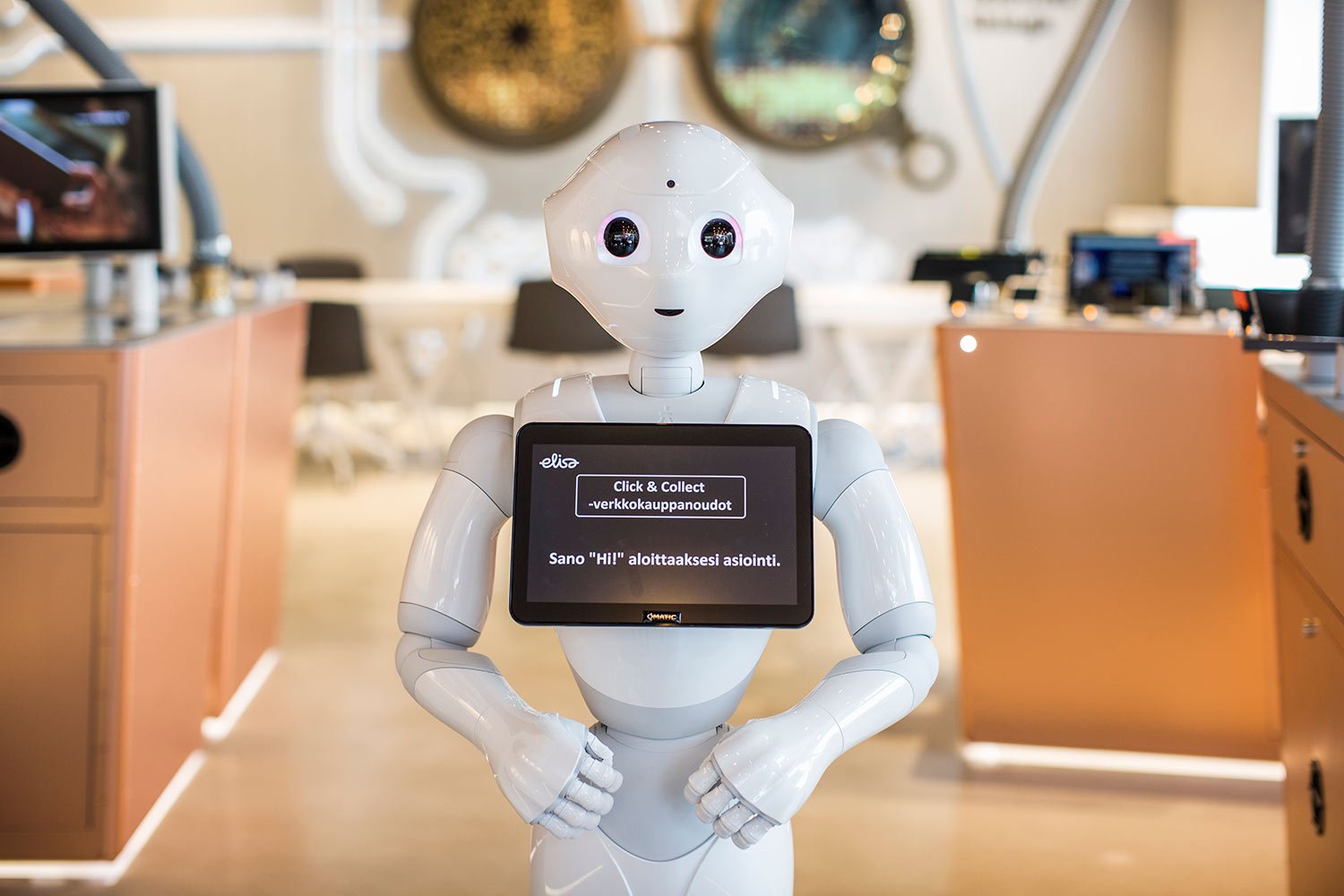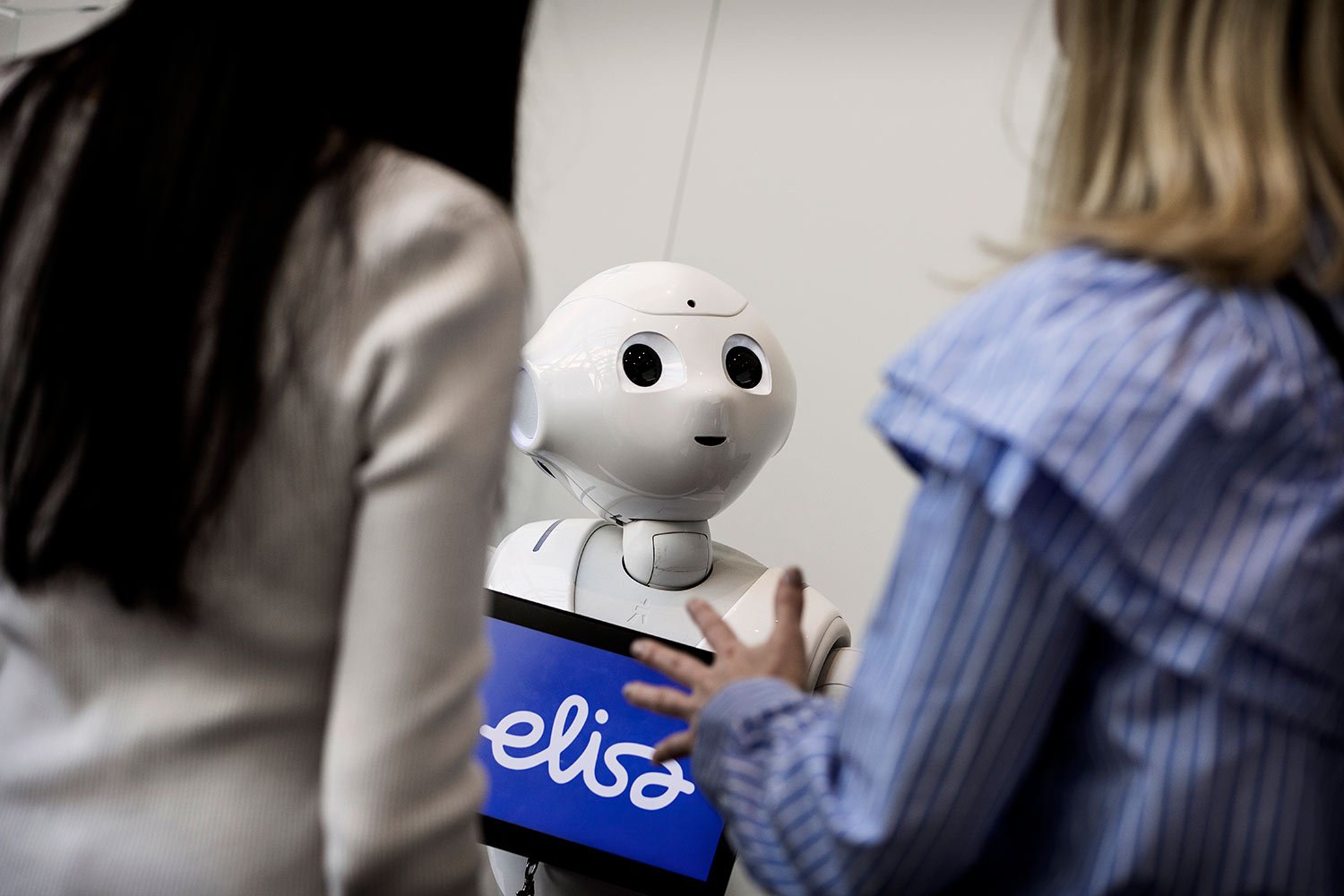
Client:Elisa
Industry:Telecommunications
Region:Europe
Improving Customer Experience Drives RPA at Elisa

30
robots developed and deployed across over 280 processes
€2M+
saved each year by billing automation
+3.6M
transaction processed by robots in 2019
+3.5K
freed every month with the help of robots
2-5 weeks
to develop a new robot on average
Client Overview
Elisa is a leading telecommunications company in Finland
Elisa is a leading telecommunications company in Finland for both mobile and fixed line services; with over 2.8 million customers relying on their network for their daily communications needs.
Innovation is key to the company’s strategy. For example, its 4G broadband network covers 99.8% of Finland offering speeds of 1GB. It is one of the first companies in the world to build a pan-country 5G network. The company has long used automation to prevent network disturbances and deliver excellent services to customers. As a telecom service provider, Elisa, has been offering innovative digital solutions and services combined with an outstanding customer experience to its B2C and B2B customers. Robotic Process Automation has been a key ingredient helping Elisa to offer a high quality of service to its customers.

Tomi Korpela, Head of Customer and Online Solutions at Elisa says: “Telecommunications companies are ideal for RPA. We have huge databases of customer data and work with mountains of transactional data. So, it’s easy to identify processes within our daily operations that will benefit from this type of automation. We can make processing faster and more accurate which, in turn, leads to better customer service.” “Automation has been central in our approach to IT delivery. We were keen to experiment with RPA to see what benefits it would bring to the company and our customers. We were keen to see if we could improve the quality of some processes and if the technology could further optimize processes that were already highly automated. The answer was yes to both questions,” explains Anssi Talarmo, Elisa’s Head of RPA.
Making an immediate impression
In 2017, Elisa began an RPA pilot to test its capabilities. The company selected an order capture process that seemed perfect for automation. Anssi says: ”Previously the process involved a great deal of manual input taking data from Excel spreadsheets and importing it into our CRM systems to raise customer orders. We chose the order capture process because it was quite straightforward–just moving data between systems–but was highly beneficial for the business and our customers.”
“It would take two minutes to do the task manually and it could be prone to errors. The robot does it almost instantly, 24x7, and 100% error-free. The customer had their order completely almost instantly. There are hundreds of orders every day so you can see the time and quality benefits from automating that single process,” he continues.
Telecommunications companies are ideal for RPA. We have huge databases of customer data and work with mountains of transactional data. … We can make processing faster and more accurate, which, in turn, leads to better customer service.
Tomi Korpela • Head of Customer and Online Solutions at Elisa
The company attributes three reasons for the successful pilot: First, the company’s structure was used to creating automations, so the business and IT were already working together. Secondly, it worked with major consultancies, including TCS and CGI, that could provide skilled RPA developers and understood the Finnish language. Finally, they identified the correct RPA tools for the company’s needs.
Reaping the benefits
One result of the pilot was a good deal of excitement around RPA and Elisa’s four business units quickly created a backlog of candidate processes. At the same time, Anssi established an RPA Center of Excellence that today involves a team of 13 analysts and developers. In addition, the company worked closely with their consultants to bring in the skills they needed to start automating more processes.
It’s demonstrated the power of intelligent automation where we can add an AI brain to the RPA brawn. It’s the way that UiPath is heading and its one that we’re also keen to explore. Anssi Talarmo • Head of RPA at Elisa
“The consultants have been great at giving us the development and maintenance skills. But, when it comes to pure RPA consultancy, I prefer to talk directly with UiPath. They are open and honest and, as RPA is still quite a new technology, they have a much greater understanding of how best to deploy it,” comments Tomi.

In addition, the RPA team has worked closely with the business units to help them reach a level of maturity and understanding where the units themselves can identify the ideal processes, re-design the process and provide all the correct documentation to allow the team’s developers to create and deploy the robots. Anssi says: “The business units are mature enough to do all the process preparation. We can then create, test and put the robots into production. Orchestrator allows us to deliver dashboards to the business units so that they can see exactly how their automations are performing. We can measure success by our ability to quickly and consistently deliver and implement the process automations that our business units expected.”
Results that speak for themselves
Elisa has automated over 280 processes using RPA, covering everything from order handling to customer contact management to billing automation. The company looked for simple processes where there were a number of repetitive manual tasks involving a small number of different systems. Billing automation fulfilled all those criteria and the RPA team was able to move from initial conversation to full production in under three months. The automation now saves the company around €2 million each year.
When it comes to pure RPA consultancy, I prefer to talk directly with UiPath. They are open and honest and, as RPA is still quite a new technology, they have a much greater understanding of how best to deploy it. Tomi Korpela • Head of Customer and Online Solutions at Elisa
Anssi comments: “RPA is so much faster than traditional IT to develop and deploy. Our average automation takes around three months from initiation to completion. The development time is anything from two to five weeks. That means we can bring new benefits to our customers really, really quickly.” In 2019, the company’s 30 unattended robots handled over 3.6 million transactions for the company. This has led to faster and more accurate process execution as well as improving employee satisfaction. Across the 280 automated processes, the robots free up over 3500 hours each month allowing staff to concentrate on higher value activities and spend more time with customers.
We currently have the highest ever levels of customers satisfaction from both our B2C and B2B customers. We must be doing something right.
Tomi Korpela • Head of Customer and Online Solutions at Elisa
Towards intelligent automation
The RPA is now looking towards intelligent automation combining RPA, machine learning and Natural Language Processing (NLP). It’s first AI-driven automation is ready to go into production. The automation revolves around email handling. When a new email is received, the automation has been trained to recognize whether it’s in Finnish or Swedish and then route to the most appropriate person.
Anssi says: It may sound like a simple task but Finnish is a very difficult language and the automations ability to distinguish is a great time saver for us that also means our customers gain the service they need faster. It’s demonstrated the power of intelligent automation where we can add an AI brain to the RPA brawn. It’s the way that UiPath is heading and its one that we’re also keen to explore.” So, has RPA really improved customer experience at Elisa? “We currently have the highest ever levels of customers satisfaction from both our B2C and B2B customers. We must be doing something right,” jokes Tomi.
Related case studies
Ready for your own case study?
Speak to our team of knowledgeable experts and learn how you can benefit from agentic automation.





